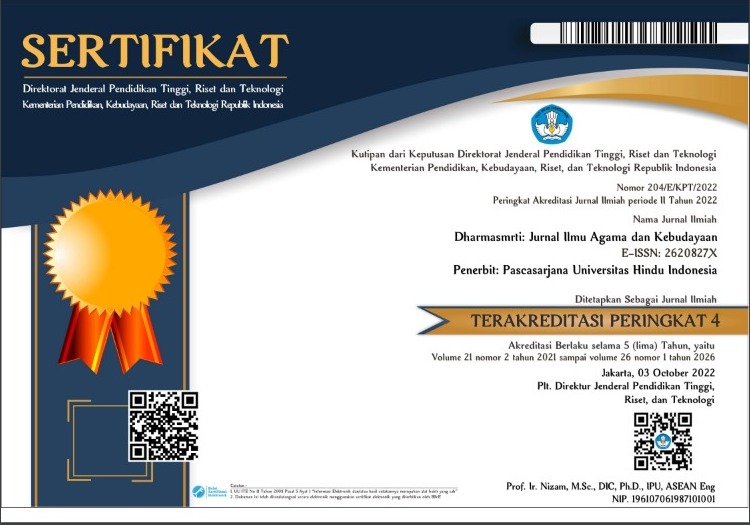KAMPANYE FEMINISME DALAM TOKOH DEWI KWAN IM (BHODISATWA AVALOKITESWARA)
Abstract
This world is a man's world where men are considered as the main thing, while women are only considered as companions. This is known as a patriarchal culture which is supported by religious and cultural entities. This patriarchal culture raises resistance from feminist groups who fight for gender equality. Among religious figures with male personifications, there is a figure of Goddess Kwan Im in Buddhism whose influence and popularity surpasses other Buddhas and Bodhisattvas. The purpose of this study is to analyze how the campaign for feminism in the figure of Dewi Kwan Im. This study uses a constructivist paradigm with a qualitative approach and data collection uses in-depth interviews and literature study. The change in the appearance of Dewi Kwan Im from male to female had the goal of making compassionate teachings more easily accepted by Chinese society when Buddhism entered China in the first century AD. Before Buddhism entered China, Chinese women worshiped and asked for help and compassion for the goddesses of compassion in Taoism and Confucianism. In addition to these objectives, the change in Kwan Im's form from male to female is a form of feminism campaign which emphasizes that men and women have an equal position, both can achieve the highest enlightenment as Bodhisattvas, although one of the requirements to become a Buddha must be a male (lingasampatti). Dewi Kwan Im motivated Chinese women at that time to have an equal position with men. Women can achieve the highest enlightenment, women can be of service and benefit to humanity as long as they are always compassionate and spread kindness.















